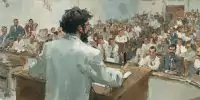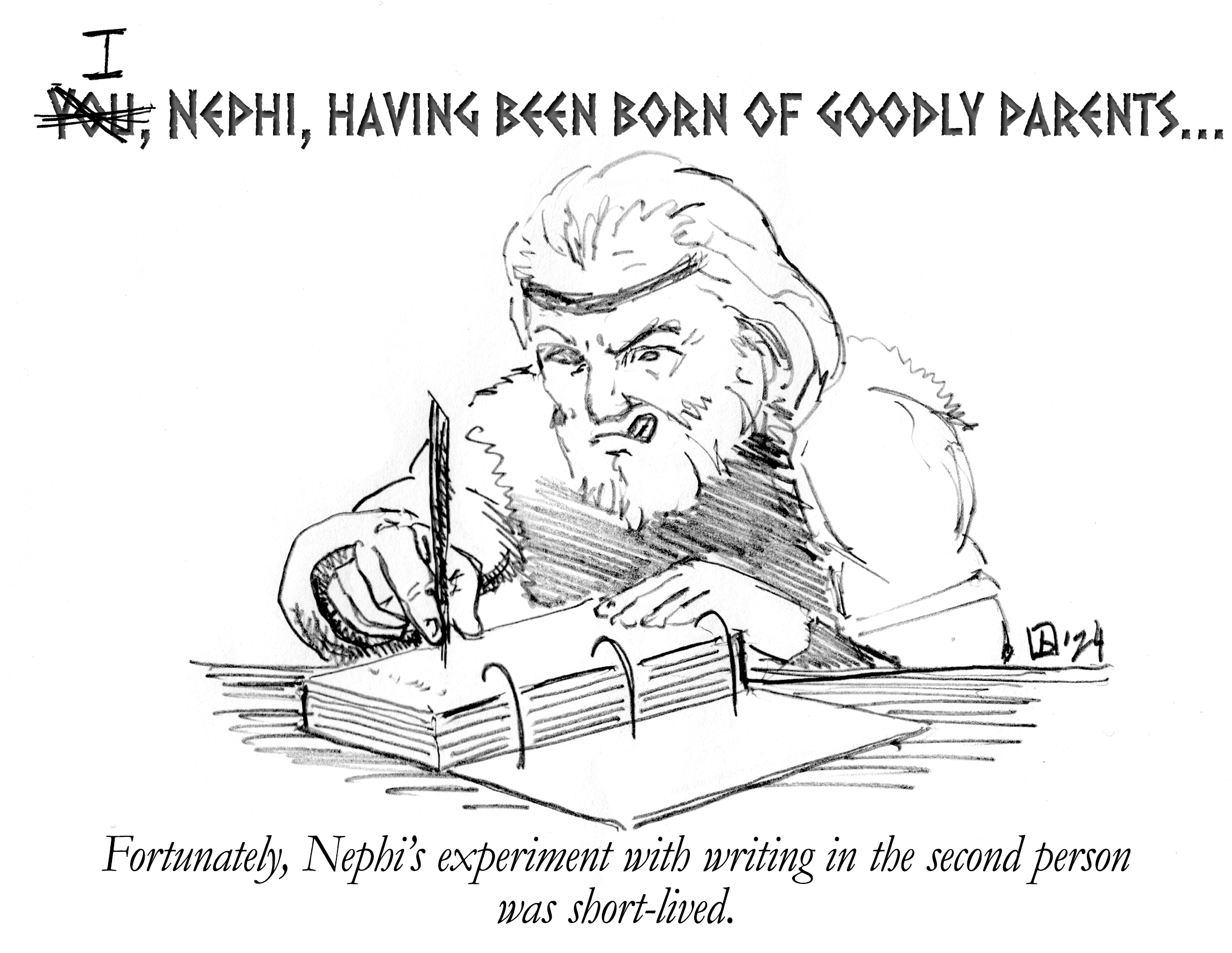In response to the recent (March 6, 2021) essay in Public Square Magazine entitled “Three Public Takes on the BYU Racial Equity Report,” I offer a fourth response. As the article blurb suggests, my dis-ease with the BYU report centers on the distinct absence of a discernible LDS/Christian focus, emphasis, diagnosis, or prescription in the report. Except for introductory and concluding generalized calls for caring, charity, and brotherly love—common to Christianity and civilized societies—there is relatively little in the document which could not be found in a similar document produced at any secular institution. I want to state in the clearest possible terms that I make this observation with full understanding that those who produced the document are fully committed, sincere, and exemplary Latter-day Saint Christians. I want to be clear that my commentary is not aimed at the faith or fidelity of any person; rather it is aimed at the extent to which, within the report, the voice and influence of Critical Race Theory (CRT) are amplified, and the voice and influence of our Christianity are muted.
I have eleven points of analysis. While there is a commonly held view that Martin Luther posted his 95 theses on the door of the church in Wittenberg as demands or challenges, they were, instead, points of theology upon which Luther invited debate and serious discussion. It is in that spirit of discussion that I present 11 theses regarding the report submitted by the BYU Committee on Race, Equity, and Belonging (CoREB) in February of this year. Each thesis posits a gap in Christian influence and import in the document, which instead reflects considerable fidelity to orthodox CRT. While such an approach is much in line with the secular doctrines pervading other institutions of higher education in 21st century America, I submit that it does not capture, or faithfully reflect the real Christian nature of BYU—choosing, rather to subsume the situation at BYU under the rhetoric of CRT.
Thesis 1. The Report itself provides little detailed data on the nature and extent of the problems it reports, or on its methods. It does, however, present a narrative consistent with CRT.
The report itself contains little detailed data on the nature, extent, or context of the race-related problems reported. The numerical data are given in an auxiliary “Key Findings” report that provides some information about the source of the data since the specific questions are included (although my professional opinion is that the questionnaires were problematic in both their content and construction—but taking up that issue is beyond the scope of this essay).
However, the main report provides very little information about the provenance of the qualitative data reported. No clear information is given about how the samples were selected, nor the characteristics of the sample—which are normally expected in reports such as this. The Report does document students’ and others’ reports of their perceptions, feelings, or negative interactions. However, there is no wider context that might help make sense of the source, origin, frequency, cause, or psychological/spiritual intensity of the perceptions or feelings or the incidents that precipitated them. That this information is simply missing is significant. Absent any information about the rationale for this approach to collecting and reporting data, and omitting any details and context, questions are raised about the objectivity of the data collection process. Because of the CRT rhetoric throughout the document, it seems that perhaps the entire process of investigating the problems at BYU was, from the beginning guided by and infused with the discourse and logic of CRT: if a BIPOC person has a negative experience it is presumed, prima facie to be evidence of racism with no further analysis of the experiences, or the actual circumstances giving rise to them, being necessary. For example, minority students reported feeling alone, having feelings of not belonging, or feeling the need to prove themselves. However, the study includes no background information that might answer whether something we could clearly recognize as “racism” was the cause of these feelings—feelings that are quite common among college students. In spite of what CRT assumes and demands, surely not all negative life situations or outcomes experienced even by minority students are attributable to racism, any more than all positive outcomes to white students are attributable to racism.
Such an investigatory approach and the conclusions that seem to confidently flow from them, evince theoretical/philosophical commitment and are not, therefore, merely the facts of racism in our society or our BYU subculture. In taking this approach the CoREB seems to have jumped to its conclusions with little attention to potentially relevant details, particularly details specific to BYU. This casts at least a shadow on any actionable recommendations that are presented as flowing from the data. One finds nothing distinctly Christian in any of the descriptions or recommendations of the report.
The religious language in the report, chiefly in quotations from President Worthen and LDS General Authorities, expresses the importance of eliminating racism and discrimination and treating all members of the BYU community with love and kindness. In contrast, the language of the broader narrative running through this report of the assessment of BYU and its situation vis-a-vis racism is very general and just happens to coincide with the language of Critical Race Theory in its diagnosis of the problem at BYU, its understanding of our situation, and its recommendations. What that suggests is that CRT constituted the background assumptions, the analytical framework, and the essential conclusions of the report.
The obvious issue is whether CRT-inspired theory, analysis, and narrative do constitute the best approach for engaging racism and other problems at BYU that the committee report takes up. BYU, it should be kept in mind, is the third-largest (by enrollment) Christian university in the country. In my experience, BYU is exceptionally closely tied to its sponsoring church. BYU faculty and students are overwhelmingly Christians—and committed Christians. Because of this strong Christian institutional and personal influence, the crucial question—completely unaddressed in the report—is whether we can really expect to experience, understand, and address intensely morally relevant experiences such as racism, equity, and belonging in the same language employed in the larger essentially secular Non-LDS/Christian settings. Why should the language of CRT trump other languages of experience and moral concern even in strongly Christian settings? Serious consideration of the nature and power of community, culture, and ethnicity strongly suggests—as CRT itself must agree—people will experience these things in a language appropriate to their culture and ethnicity. My proposition is, therefore, that there is a Christian form of, and language for, experiencing, addressing, and understanding equity, belonging, racism, and all related things. One finds nothing distinctly Christian in any of the descriptions or recommendations of the report. Presumably, the narrative of Critical Race Theory won out, and displaced other narratives, even before the data were in and the recommendations were being formulated. For a strongly Christian community, it is not obvious that the CRT narrative is really the best narrative, the best language to understand and deal with the issues the CoREB was charged with understanding.
Thesis 2. Does the prevailing CRT understanding of human nature, morality, race, and ethnic identity and relations, and Christianity cleanly apply to BYU?
This thesis follows closely from Thesis 1. In deciding whether the language, categories, and narrative of CRT are applicable to an overwhelmingly Christian institution such as BYU—its students, staff, and faculty—it must be clearly understood that CRT is not a straightforward factual description of racism and related problems of equity and belonging. It is, rather, a theory about those things. And it must be understood that any theory brings with it metaphysical and epistemological assumptions that cannot be avoided or simply ignored. Thus CRT, as does any theory or approach, always brings a full set of assumptions and implications already in place regarding human nature, the nature of the world, causes of human action, and the possibility of human agency and of morality. As a theory, CRT cannot be seen as just a description of reality or even simply a theory of racism. It is a theory about what we are and why we do what we do.
So, to understand CRT and to decide to employ it—hopefully before adopting it as the appropriate perspective for undertaking an evaluation of racism, equity, and belonging in any particular setting – one must carry out a careful evaluation of the perspective, including a clear understanding of its history and underlying assumptions. The BYU report in its seamless adoption of CRT language and categories provides no evidence that any such evaluation of CRT as a theory with an intellectual history was ever undertaken. Thus, the question remains: Is the CRT account in the report appropriate for a Christian community like BYU? Does it map neatly onto the language in which BYU people understand and experience the phenomena in question? CRT has a decades-long history and an even longer history with other manifestations of critical theory going back at least a century and a half. This is an essentially secular history. If all this has not been recognized, understood, and evaluated, then there is little reason to suppose the CRT categories and language will give us a genuine picture of experiences at a distinctly non-secular university. The report provides no evidence that any careful study or analysis of CRT —let alone its applicability to a Christian institution—was undertaken. Thus, there are genuine questions about the applicability and utility of the report for BYU or any other deeply Christian setting. For Christians, Christianity itself must be The Safe Space.
Thesis 3. The committee’s CRT-inspired recommendations call for the establishment of “safe spaces” on campus in lieu of Christianity as THE safe space for everyone and everywhere.
The committee’s CRT-inspired report recommendations call for the establishment of what are essentially “safe spaces.” What is overlooked is that, for Christians, Christianity itself must be The Safe Space. It is designed, from the foundation of the world to be the safe space for all humanity. If we find that a distinctly Christian setting like BYU does not seem like a safe space to members of the BYU community, or to other Christians, then it is our Christianity that needs to be examined, not our conformity to the precepts of CRT. This is a principal reason the lack of a discernibly Christian perspective and narrative running throughout the BYU document is an omission of significant concern. If we, with our Christian mission and our Christian identity, do not provide requisite safe space, then we need to examine and understand how our Christian mission is being pursued, and how secular perspectives and activities might be interfering with and obscuring it We also must be aware that an LDS/Christian safe space will likely not be described in the same terms, serve the same functions, or provide exactly the same things as a CRT-inspired safe-space.
Thesis 4. A CRT perspective is, in various ways, at odds with Christianity. Uncritical infusion of CRT into a Christian university is naïve and unwise.
The relationship between Hegelian-inspired theories and Christianity has always been “difficult,” to say the least. There is, to be sure, a perceived commonality of spirit in certain matters, such as a concern for caring, justice, and equality. However, the diagnosis and etiology of the ills of society, such as racism, among others, is not common nor compatible between the two systems of thought; and therefore, neither is the prescriptive cure. The legacy of CRT and its critical-theory cousins, from the philosophy of G.W.F. Hegel, is that human events are the result —even the product—of powerful abstractions—i.e., ideas at work, universally producing culture and discourse, as well as the human mind and heart. All these things are essentially marching along with history itself. For Christianity, on the other hand, the universal human reality is that because of the fall, all people must be understood as broken people in a broken world. Yet as moral agents, we are charged with exercising that agency to accept the grace of Christ and overcome our universal brokenness, all this taking place in an open-ended world.
The very nature and role of “religion,” and certainly of Christianity in particular, are different when viewed from CRT than from an LDS/Christian perspective. Professor Ibram Kendi, who has become the spokesperson of sorts for CRT and its “anti-racism” manifestations, has made a fundamental distinction between two types of Christian religion. In his words, “Liberation Theology” leads to social revolution, anti-racism, justice, and freedom, while “Savior Theology” leads to racism and oppression. Certainly, LDS Christians will likely count themselves among “Savior Theology Christians,” which is another reason to question the fit of CRT narratives, language, diagnoses, and processes to BYU.
Thesis 5. Analyses and recommendations founded on CRT and related Critical Theories privilege non-agentic accounts of racism and other social and moral problems—and, thus, of our moral lives.
CRT, as its legacy from Hegelian thought, understands the world in terms of grand abstractions (Ideas), endowed with the power to cause or produce, events, cultures, and human thought and moral dispositions. Such a world is at odds conceptually and morally with a view of the world as divinely created and designed to be the right setting to provide meaningful and sufficient moral tests for children of God, who are moral agents. These two world views are incommensurable if for no other reason than the former has no place for, or account of, human agency, while the latter requires it. It is legitimate to ask, then, which of these two world views should guide BYU’s response to “racism” and other social and cultural problems?
True to their Hegelian roots, CRT and related critical theories will always privilege non-agentic accounts of racism and other social phenomena. This non-agentic legacy manifests itself in claims that racism is “systemic.” In many contexts, the word “systemic” can mean simply “widespread,” or “present in many places.” However, in the context of CRT and its related critical theories, the term “systemic” is a technical term, meaning that a phenomenon like racism arises from a larger system of ideas and cultural forces moving events and persons along. (Marxist systems of economics and wealth may be the best-known examples of this characteristic of Critical Theories.) From the vantage point of Critical Theories, systemic problems do not arise from the actions of individual agents, or even groups of agents, but rather from the supra-individual and supra-human racist, gendered, classist, and speciesist systems operating in the world. If human agency has nothing to do with the origin of problems such as racism, then human agency has nothing to do with the solution. The solution to something systemic does not lie in the hands or lives of individual moral agents engaged in the world. Systemic solutions come, not from the acts of individual agents, but from manipulating and altering the whole grand system. Thus, the only solution is to vest power in the hands of an enlightened (or “woke”) few, who can really see the problem (e.g., racism) in its true systemic nature.
From a Christian perspective, however, human moral problems all resolve in and through the grace made possible by a great willing sacrifice. From CRT (and other secular critical-theory perspectives, too) systemic moral problems can only be resolved by the exertion of power. Which of these two choices seems compatible with what members of The Church of Jesus Christ of Latter-day Saints refer to as the Great Plan of Happiness?
Thesis 6. CRT and related Critical Theories are not recently “discovered” truths or 21st-century enlightenment, but rather 19th-century German idealism, newly polished.
It is important to keep in mind that CRT and related theories are not recently discovered truths, the products of liberated 21st-century thinking. That is, CRT didn’t only recently occur to contemporary trendy, enlightened post-moderns. It was on the cutting edge of the early 19th century.
Viktor Frankl, the noted Jewish psychologist and philosopher, who personally survived the Holocaust, once commented in writing that the Holocaust had its roots in the German universities in the 19th century. One such intellectual root was the German Idealism developed by Hegelian thinkers, the effects of which were felt in the middle decades of 20th Century Western culture. This is the common root from which the Critical Theories, including Marxism and CRT, arose. Frankel’s conclusion is, thus, that the holocaust arose out of a grand philosophical system that proposed a holistic system of ideas moving toward its own end, and emancipation from systems that had gone before. In such a system the exercise of power for the advancement of “all” is justified completely and only in itself. People play only a generic role, and are not individual moral agents but, essentially, “people in general,” either furthering the realization and success of the system (e.g., the National Socialists), or impeding it (the Jewish race, and the unenlightened populace). Understanding these problematic aspects of the legacy of German Idealism found in contemporary Critical Theories, we should be cautious about adopting its categories of thought and its understanding of culture, people, morality, and social institutions. We also should be cautious of defining persons chiefly based on their membership in newly designated groups of “generic people,” reflected in labels given to our brothers and sisters newly conceptualized as “BIPOC,” and “LGTBQ.”
For these reasons then, any Critical Theory-inspired intellectual tradition becomes an odd guarantor of liberty and morality, especially for Christians, and even for members of newly defined generic groups.
Thesis 7. To be sensitive and to pursue equity, justice, kindness, and belonging does not require acceptance of the CRT conception/definition of social justice or “anti-racism.”
There is enough insight, motivation, and strategy—and to spare—in the civil rights writings and movements of the past 60 yare to accomplish what needs to be done. For example, the writings of Martin Luther King, Jr., are inspiring illustrations and offer definitive principles and blueprints for what needs to be done. This agenda of these earlier civil rights pioneers has never been challenged or refuted on logical, rational, or moral grounds. With its proven track record, it provides a way forward that is supportive and affirming of Christians.
So why take another path? The principal arguments in favor of CRT (and away from the agenda Dr. King espoused) seem to be based mostly on three issues: 1. Bald intellectual faddishness: MLK’s approach is not post-modern nor sufficiently neo-Marxist to satisfy the demands of intellectual trends, and appeal to a younger generation who, like every generation previously, really wants the thrill of believing they have discovered something for themselves. 2. Change within the prior system just isn’t fast enough, or, perhaps dramatic enough. Indeed, although “colorblind” approaches to racism might well solve the critical concrete problems associated with racism, they don’t produce passion and headlines in today’s post-modern media and intellectual markets. 3. CRT, as part of its requirements for success, requires power, and the power must be concentrated in an intellectual woke elite, who really “get it.” That “will to power,” although by no means new, seems to be perpetually irresistible.
It seems clear, in light of the foregoing, which approach is more congenial to and compatible with the needs and mission of a Christian people and a Christian institution.
Thesis 8. “Cancel Culture,” which always seems to be, sooner or later, attached to CRT has a long history not worthy of emulation.
Students of history quickly recognize that “Cancel Culture,” and tactics of canceling people and ideas out of sync with current ideology do not constitute a new tactic inspired by a supposed desire (on the part of critical theory adherents) to liberate and protect people. In fact, there are at least two formal historical terms for the project we currently know as “canceling.” The first is “iconoclasm,” from the Greek eikon (meaning ‘figure’) and klåō (meaning ‘to break’); thus, “figure,” or “statue” smashing. The other term is “damnatio memoriae,” condemnation of memory, meaning that a person is to be “damned,” i.e., excluded from official accounts, records, and even memories.
The CoREB report raised this issue in regard to possibly renaming campus buildings. The practice can be traced at least to the Bronze Age and the actions of Akhenaten to destroy all former gods and chisel out of stone structures all references to their names. Contemporary cancel culture thus has a direct historical line up through some aggressive religious movements, and many conquerors, dictators, and tyrants. For a movement that promises greater freedom, it is deeply troubling that CRT would enthusiastically align itself with such a historically tyrannical practice of controlling and asserting power. In contrast to this, the truly Christian model centers around repentance and forgiveness, rather than canceling. It seems obvious which of these should be advocated and supported at BYU.
Thesis 9. The BYU report with its implicit CRT framework ignores two salient facts about BYU and its student body pertinent to the topics of the report.
First, the BYU community includes literally thousands of students, faculty, and staff, who have deep spiritual ties and covenant-based relationships with God’s children of many nations and races. This includes individuals from every state of the United States and over 100 foreign nations. It also includes thousands of returned missionaries. Everyone who has served knows that mission calls and the love that attends them last a lifetime. The language and categories of CRT have very little—perhaps nothing—to contribute to our understanding of loving and serving racially and ethnically diverse populations—except, perhaps, to inject suspicion about motives and inadvertent consequences.
Wherein lies the utility or superiority of a CRT perspective to that of the restored gospel for those who literally have gone “unto all the world?” Should not the CoREB report, and BYU’s response to it, recognize, acknowledge, appreciate, and make use of these matchless resources rather than ignore them—privileging instead a CRT perspective? This seems clearly to be a sort of blindness to the Christianity indigenous to BYU.
Second, The BYU student body is served by and is integrated into more than 200 active LDS/Christian congregations where young people with Christian testimonies worship, interact, and seek moral improvement. Why does the BYU Committee Report make no mention of this vast resource—except that it is not part of the CRT narrative? Is not sincere Christian worship the well-spring of love, charity, inclusivity, welcoming, and equity?
Thesis 10. The nature, place, and role of human agency are largely absent from the document and from CRT.
Consistent with their Hegelian roots, Critical Theories, including CRT, afford no important place for human agency in their accounts of either the origin or the solution to social problems, such as racism, equity, and belonging. Introductions to CRT usually begin by postulating the existence of “implicit biases” already and always dominant in human perceptions, attitudes.
Of course, there are implicit “biases” at play in our perceptions, attitudes, and judgments. Such pre-existent, interpretive knowledge, maintained quite naturally and without conscious deliberation, is what makes it possible for us to awaken in the morning and not have to reconstruct ourselves from scratch. Such knowledge also makes it possible for us to assimilate and to accommodate our ongoing experience. However, such biases are “biases” because they are not subject to immediate consciousness and affirmation. And this use of the term “bias” may not, and in my judgment does, not map neatly on the sort of bias that makes up the working conceptual content of racism.
From the point of view of Critical Theories (and CRT is no exception), consciousness and agency are products of systemic circumstance and cultural forces and are thus agentic in name only—i.e., not agentic at all. As Karl Marx once wrote: “It is not [the] consciousness of men that determines their being, but, on the contrary, their social being that determines their consciousness.”
Critical Theories endow abstract entities with directive and determinative power in human activities and understandings, including self-understanding. Human agency, however, does play a crucial role in LDS/Christian understandings of life and the world. Bluntly stated, beings without moral agency need no savior.
Thesis 11. The report of the BYU CoREB could have been much more deeply and proactively Latter-day Saint/Christian rather than re-actively CRT-informed.
If there are race- or ethnic-related problems and issues at BYU—as we assume there must be in a world of imperfect (even “broken”) people—then why not examine rigorously and carefully, with full purpose of a Christian heart, what we as LDS/Christians have to offer in response to, and in order to eliminate, and meliorate any racism in our hearts or in any of our social “systems.” We might start with exploring the depths and exploiting the power of the doctrines of the restored gospel of Jesus Christ—the great majority of which we share with all Christians. Does CRT really offer something better as a starting point for analyses of race, equity, and belonging? We can begin with the following:
- All people on this earth are divine children of a passive (i.e., capable of passion and emotion, and able to be moved to compassion) and loving God who has covenanted to care for us and help us grow toward Him.
- Our passive God intervenes actively in the lives of His children of every nation. He intervenes in the lives of people and in the life of peoples.
- This mortal life has a moral purpose, collectively and personally. and it is overseen by a loving God who desires the moral and temporal well-being of all his children and actively works toward that purpose.
- A universal part of our moral purpose is to love and serve all of God’s children, and to not be “respecters of persons.” We have a sacred obligation to work for, and to desire, the well-being and salvation of all people.
- This world is exquisitely designed to allow all human beings to accomplish their moral purposes. We are all eternal morally sensitive agents, capable of meaningfully acting for ourselves and thus capable of both sin and nobility.
- Yet, all mortal beings are “broken,” have sinned and fallen short. Thankfully, there is a plan for our salvation and eternal life in the presence of God.
- We are saved and exalted through the mediation of a Savior, Jesus Christ. The mediation of the Savior and the blessings of eternity are freely open to all who will desire them enough to enter in at the gate.
- How we treat one another is fundamentally determinative of the state and destiny of our souls. Indeed, the sociality of this life endures into the next life.
- Not all morality is purely social morality. Personal morality entails morality toward other persons. (CRT and other critical theories like Marxism turn all morality into social morality, i.e., concern for global and political morality, for example, the various ‘isms’ which, ultimately, cause people to commit crimes against the “woke” state. These theories cease to deal with individual morality, such as personal adherence to standards of honesty, and chastity – seeing these as the legacy of “racism.” However, that so-called “personal morality” is inherently social also, since most of the personal morality that has been a part of our tradition centers on how we act toward our “fellow beings”).
In short, there is no understanding or insight provided by CRT that is more important or more powerful than these Latter-day Saint/Christian realities. The “abundant life” offered by the Savior is both richer and simpler than any that might be envisioned within or through CRT.
For all these reasons, I propose more attention to the ways in which an explicitly Christian vision can inform and shape our ongoing and future conversations about race, equity, and belonging at BYU, and in America as a whole.
















